#Jupiter Mass Binary Objects
Text
2023-#1: Weirdness in Review: 2023

The last twelve months have spawned a swarm of strange news stories. When the news is at maximum weirdness it seems to come out of the Twilight Zone and involves cryptids, aliens, UFOs, and radical shifts in our understanding of the universe. A classification for these news weirdies is their location: on Earth, in this solar system, or out in the universe somewhere. And 2023 served up weird stories for each of these…
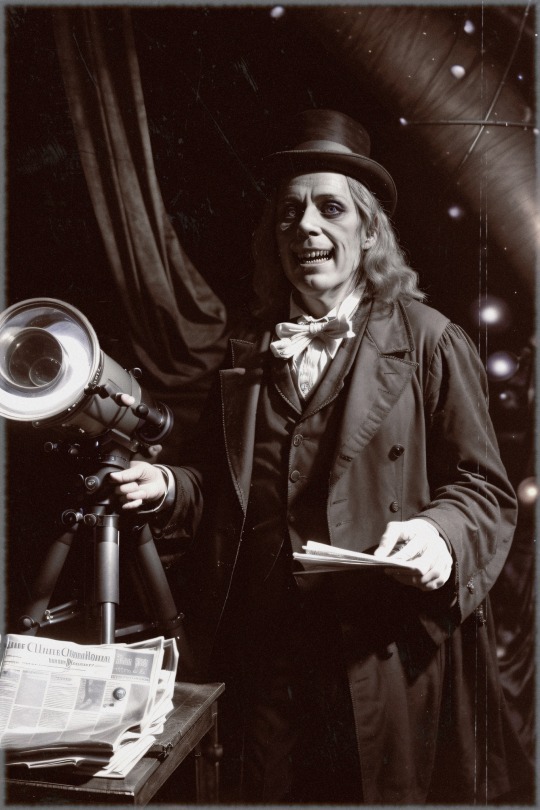
We have previously covered strange lightning and mirages (see 2021-#1: Strange Phenomenon). But in 2023 “earthquake lights” received coverage. Earthquake lights were seen in August in Morocco before the earthquake, and they have been photographed in Peru. Earthquake lights happen before earthquakes occur but only along major fault lines. The prevailing theory is that before an earthquake the extreme pressures along a fault line releases static electricity that travels up interacting with minerals, such as crystals, resulting in the earthquake lights. They may appear in the sky or directly coming out of the ground like ghostly flames. Imagine a mad scientist planning to harness the mysterious energies of earthquake lights…
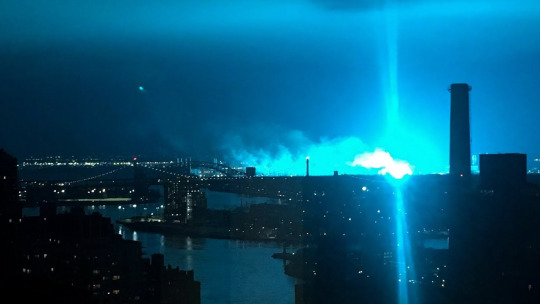
A second weird news tale was highly publicized: the diminutive alien bodies presented to the Mexican senate. One of those bodies sure looks like a neatly formed and potentially delicious tiramisu. What is not widely known about the tiramisu alien mummies is that they were previously presented to the Peruvian attorney general who studied them and did not eat them, determining exactly how they were recently constructed and what they were made out of - vegetable and animal material, so not tiramisu.

NASA recently announced a potential asteroid impact in 152 years, in September. The asteroid, Bennu, has a 1 in 2,700 chance of striking this planet with the force of twenty-two nuclear bombs, or the equivalent force of 22 billion capybaras. It was announced that the destruction would be the size of Texas, not necessarily that Texas is its target though. Since this has a low chance of happening, there is another weird news story of something much more tangible found on this planet.
This year a new life form was discovered, in the depths of the ocean in Antarctica lurks a Lovecraftian horror. The new species found looks like an alien octopus-jellyfish crossbreed named, “Promachocrinus kerguelensis.” They have 20 arms and an actual photo is below. Simply put, the aboleth, a dungeons and dragons monster, has been discovered to be real.


The second category of weird news stories is located within the solar system but off this planet. These days constant discoveries are in the news. Recently detected lightning on Venus might be caused by meteorites, a magnetic field effect, something unknown, or just might be lightning. A moon of Jupiter, Europa, was found to have carbon meaning that the oceans of this moon could have life. What has not been found in the solar system has always been in the news but covered a lot in 2023: a hidden planet. Nibiru is the name of the hidden planet some claim is in our solar system, perhaps on an opposite orbit as the Earth, blocked by the sun. Such a planet could have the same elements as the Earth, an atmosphere, water, and life. What if all these tin can flying saucers seen in the 1950’s that couldn’t survive interstellar travel are really spacecraft from a hidden planet within our own solar system, from a secret alien race that watches us.

The third category for weirdies is out in the universe beyond this solar system. It is a good time to be alive to learn about these discoveries. About a month ago it was announced that gases were detected on a planet 110 light years away that are only produced by plankton. Yes, it sure seems that in 2023 life on another planet has been found, on a water world. We can only hope that a flood of data comes in the future about this planet, named K2-18b.
Just in the last few days a major discovery was made within the Orion Nebula. 540 free floating planets were discovered, just wandering about in outer space without stars. 80 of these planets are Jupiter-sized and are gravitationally bound to each other, planetary duos. These 80 planets have been named, “Jupiter Mass Binary Objects,” or JuMBOs. It is recommended to sharpen that telescope image on these objects, after all, don’t animals travel in pairs? Didn’t the Star Wars series, Ahsoka, just include giant space-dwelling lifeforms, giant whales named Purrgil?

In 2023 the Webb telescope produced images that show galaxies and black holes existing too early in the history of the universe. The Webb telescope has seen back so far it may be starting to pick up supermassive dark matter stars at the outer fringes of the universe the size of small galaxies, yes - stars the size of galaxies. It seems to suggest that the Big Bang was not the start of the universe. Maybe the Big Bang was just a chain of supermassive dark matter stars all exploding. Maybe the universe is much older and more mysterious than we can imagine. A few supermassive dark matter stars could have survived and are at the fringes of the universe right now driving the expansion of the universe.
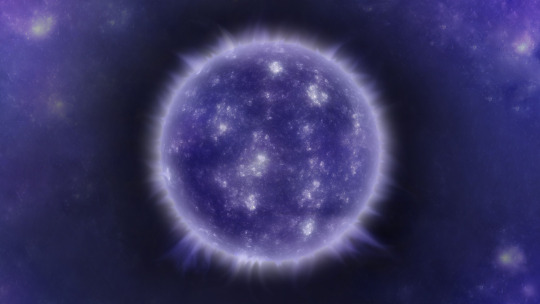
All this in one year! This year they even found a giant question mark in outer space. Who knows what weirdies will be found in the next year? Unfortunately the statement, “who knows what the future may bring?” is now a false statement. That’s because this year computer models predicted that in about 250 million years from now, mammals will go extinct on this planet: and that means humans. In 250 million years all of the continents will form a supercontinent, Pangaea Ultima, resulting in the temperature rising significantly. This, of course means that the reptiles will rise once more, and that the dinosaurs will eventually re-evolve and therefore ruling the Earth before us and after us…. Wow, 2023 has really delivered some weird news, what a great year!

#halloween#earthquake lights#aliens#mexican alien#Promachocrinus kerguelensis#lovecraftian#aboleth#D&D#Venus lightning#europa#nibiru#ufo#k2 18 b#orion nebula#Jupiter Mass Binary Objects#ahsoka#purrgil#james webb space telescope#supermassive dark matter stars#weird news#weird science#weird#Pangaea ultima#true halloween tales
18 notes
·
View notes
Text

Lead study Mexican author Luis Rodríguez, a professor emeritus at the Institute of Radio Astronomy and Astrophysics at the National Autonomous University of Mexico
In 2023, the James Webb Space Telescope (JWST) helped identify hundreds of free-floating "rogue" planets that don't orbit a parent star. Now, astronomers have found that a pair of these planets may be producing enigmatic, hard-to-interpret radio signals.
The rogue planets spotted by JWST lie in the Orion Nebula, a long-time observational hotspot for astronomers. In total, they number over 500. This discovery bonanza was possible thanks to JWST's ability to pick up infrared radiation emitted by these relatively young planets.
Bizarrely, though, about 80 of these planets exist as pairs. Similar in mass to Jupiter, the planets orbit each other at distances ranging from 25 to 400 times the distance between Earth and the sun. These tangoing duos, called Jupiter-mass binary objects (JuMBOs), pose a huge mystery for astronomers, because the existence of these worlds challenges current theories of planet formation. Some scientists think these objects may not even be planets but rather previously unknown entities that are larger than planets but smaller than brown dwarfs, which are sometimes called "failed stars" because they blur the line between planets and stars.
The JWST data showed that JuMBOs generated infrared radiation, but the new study's authors wanted to see if these dancing objects produced radio waves. That's because different classes of cosmic objects produce distinct patterns of radio emissions. For instance, planets like Jupiter spew several types of radio signals, including gigahertz-frequency emissions thousands of times higher-pitched than an FM signal, partly because of their magnetic fields.
Spotting such signatures from the JuMBOs could help resolve their identity. The observations could also explain "why some objects have detectable radio emission and others do not," lead study author Luis Rodríguez, a professor emeritus at the Institute of Radio Astronomy and Astrophysics at the National Autonomous University of Mexico, told Live Science in an email.
To find radio wave "snapshots" of the Orion Nebula where the JuMBOs reside, the scientists combed through archives of observations maintained by the U.S. National Radio Astronomy Observatory (NRAO). They found just one pair that apparently emits radio waves: JuMBO 24. Itself an oddity among the oddball objects, it's the heaviest of the JuMBOs, and also the one with the tightest space between its component planets.
A decade's worth of data the research team collated showed that the radio waves remained steady but strong, with a power of roughly a quarter of a ton of TNT and frequencies of 6 to 10 gigahertz. The radio waves also weren't circularly polarized, meaning they lacked spiral, twisting electric fields, the team reported in their study, published Jan. 8 in The Astrophysical Journal Letters.
But these features aren't what astronomers expect of signals created by planets." Circular polarization is an unambiguous indicator of the presence of magnetic fields," Rodríguez said. Without this, the team can't say definitively that the signals come from JuMBO 24 (assuming the planets have magnetic fields). Besides, radio emissions from other exoplanets are more variable and less intense.
Even if JuMBO 24 isn't a pair of planets but rather another type of cosmic duo, the signals are unusual. Signals from brown dwarfs are very different from the newly identified radio beams. The beams' brightness and frequency even ruled out the possibility of pulsars, the rapidly spinning cores of dead stars that produce pulses of radio waves at regular intervals.
The researchers also estimated the likelihood that the signals originate from an object behind JuMBO 24 and found it to be exceedingly slim, at just 1 in 10,000. And, in case you were wondering, the signals probably don't originate from aliens. "The fact that both components emit at similar levels favors a natural mechanism," Rodríguez said.
With the research at an impasse, the team is applying to the NRAO's Very Large Array in New Mexico to collect data from free-floating planets. Until then, the radio signals will remain a mystery.
#🇲🇽#STEM#Luis Rodríguez#mexican scientists#astronomy#science#Institute of Radio Astronomy and Astrophysics#National Autonomous University of Mexico#James Webb Space Telescope#JWST#radio signals#planets#orion nebula#Jupiter-mass binary objects#JuMBOs#brown dwarfs#jupiter#JuMBO 24#The Astrophysical Journal Letters#pulsars#mexican#latino#hispanic
10 notes
·
View notes
Text
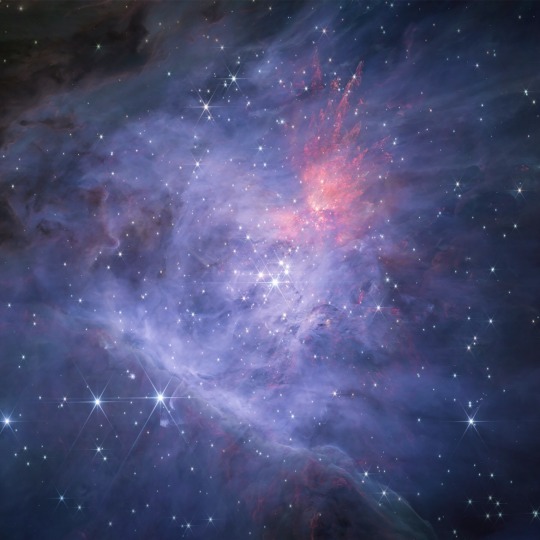
An infrared composite image of the inner Orion Nebula and Trapezium Cluster captured by the James Webb Space Telescope. NASA, ESA, CSA/Mark McCaughrean & Sam Pearson

"Shrapnel" racing away at more than 100 kilometers per second in the Orion Nebula. It resulted from an explosion scientists believe was a huge collision between two massive young stars that took place in the last thousand years. NASA, ESA, CSA/Mark McCaughrean & Sam Pearson
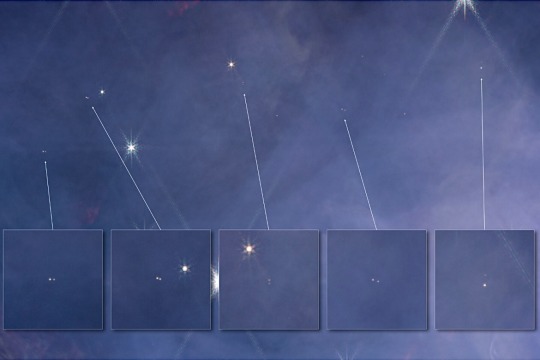
Scientists believe that five pairs of newly-discovered faint sources, above, are young, hot objects with just a few times the mass of Jupiter. They are called JuMBOs, short for Jupiter-Mass Binary Obiects. NASA, ESA, CSA/Mark McCaughrean & Sam Pearson
The Orion Nebula Is Full of Impossible Enigmas That Come in Pairs
In new, high-resolution imagery of the star-forming region, scientists spotted worlds that defied explanation, naming them Jupiter Mass Binary Objects.
By Jonathan O'Callaghan
The New York Times - October 2, 2023
#Science#Astronomy#Universe#Nebulae#Stars#NASA#JWST (James Webb Space Telescope#JuMBOs (Jupiter Mass Binary Objects)#Photography#Astrophotography
2 notes
·
View notes
Text
JWST observations of the star-forming heart of the Orion nebula have given us something we've never seen before.
There, in the Trapezium cluster, scientists have found dozens of planet-like objects roughly the mass of Jupiter untethered to any star, drifting through the galaxy in gravitationally-bound pairs like it's a perfectly normal thing to do.
But it isn't. There is no known formation mechanism that can lead to these binary masses – never mind 42 of them.
As we find more and more alien worlds in the Milky Way, though, it becomes more and more clear that our understanding of the birth of planets has some serious holes. So, what these objects are, and where they come from, could help us learn more about how stars and planets form.
Astronomers Samuel Pearson Mark McCaughrean of the European Space Agency have named them Jupiter Mass Binary Objects, or JuMBOs, and described them in a preprint paper that has been submitted to Nature.
Continue Reading
275 notes
·
View notes
Photo

2023 October 10
Hidden Orion from Webb
Image Credit & License: NASA, ESA, CSA, JWST; Processing: M. McCaughrean & S. Pearson
Explanation: The Great Nebula in Orion has hidden stars. To the unaided eye in visible light, it appears as a small fuzzy patch in the constellation of Orion. But this image was taken by the Webb Space Telescope in a representative-color composite of red and very near infrared light. It confirms with impressive detail that the Orion Nebula is a busy neighborhood of young stars, hot gas, and dark dust. The rollover image shows the same image in representative colors further into the near infrared. The power behind much of the Orion Nebula (M42) is the Trapezium - a cluster of bright stars near the nebula's center. The diffuse and filamentary glow surrounding the bright stars is mostly heated interstellar dust. Detailed inspection of these images shows an unexpectedly large number of Jupiter-Mass Binary Objects (JuMBOs), pairs of Jupiter-mass objects which might give a clue to how stars are forming. The whole Orion Nebula cloud complex, which includes the Horsehead Nebula, will slowly disperse over the next few million years.
∞ Source: apod.nasa.gov/apod/ap231010.html
206 notes
·
View notes
Text

JWST finds free-floating planets in the Orion Nebula?
JWST found over 500 new Jupiter-mass planets in the Orion Nebula.
9% of them are in wide binaries, and nobody knows why... or maybe, they do?
32 notes
·
View notes
Text
"Dozens of planet-sized objects have been discovered in the Orion Nebula via observations that could herald the existence of a new astronomical category.
The free-floating entities, which have been named Jupiter-mass binary objects, or Jumbos, appear in spectacular images taken by the James Webb space telescope...
...
Prof Mark McCaughrean, a senior adviser for science and exploration at the European Space Agency (ESA), said the observations were inspired after data from ground-based telescopes hinted at the existence of the mysterious class of object.
“We were looking for these very small objects and we find them. We find them down as small as one Jupiter mass, even half a Jupiter mass, floating freely, not attached to a star,” he said...
...
The smallest stars are about 80 Jupiter masses, below which the core is not dense enough to fuse hydrogen, but smaller objects can coalesce through the same process, including dimly glowing brown dwarfs – sometimes called failed stars – and, below about 13 Jupiter masses, planetary-mass objects. But theoretical predications suggest that the lower boundary for an object forming through a star-like gravitational collapse is about three to seven Jupiter masses.
Smaller free-ranging objects have occasionally been sighted, but it was unclear whether they had formed in situ or had been ejected from a planetary disc around another star. The latest observations are more challenging to explain because, out of the hundreds of roughly Jupiter-sized objects found, dozens are in binary pairs."
More in linked article.
I wonder how many small brown dwarfs(?) like this are drifting around in interstellar space in our galaxy? Intriguing to think that if they're common there might be one relatively close to our solar system...
23 notes
·
View notes
Text
My heart & head screamed for this.
"JuMBOs"
Messier 42, the bright nebula located within the constellation of Orion, inhabits some Jupiter-mass binary objects which are called JuMBO's.
These newly discovered, bright objects have masses between 0.6 & 13 times the mass of Jupiter & most of them are found in binary pairs for a unknown reason. Their most perplexing feature though is that they’re free-floating through space, not orbiting any star.
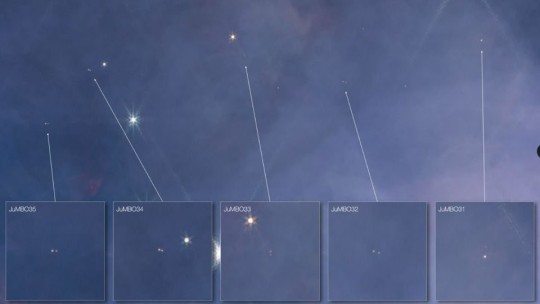
Five JuMBOs can be seen in this image, which zoomed in on the finer details of the larger Webb portrait of the Trapezium Cluster in the Orion Nebula.
Of course, free-floating or 'rogue' planets have been discovered before but the big number of objects in this region, more than 30 pairs, raises some difficult questions.
The astronomers found 40 pairs of JuMBOs & two triple systems, all on wide orbits around one another. Although they exist in pairs, the objects are typically about 200 astronomical units apart, or 200 times the distance between Earth & the sun.
It can take between 20,000 & 80,000 years for the objects to complete an orbit around each other.
The objects’ temperatures range from 537 degrees Celsius to 1,260 C.
The gaseous objects are rather young, astronomically speaking - about 1 million years old.
Our solar system, in comparison, is 4.57 billion years old.
What is a 'rogue' object or planet?
Planets are thought to form in the dusty disks around young stars.
During their formation & their existence it's always possible that a game of gravitational billiards knocks some of them out into interstellar space.
Technically, this could still happen in our solar system!
But for it to happen so many times in one region of space seems unlikely, especially because these objects are STILL gravitational bound to each other!
Currently, our best models for how stars & planets form can’t explain these JuMBO's, which is why further research is necessary.

Credit to NASA/ESA
Link to the papers.
#donnies exceptional mind#turtle net#rottmnt#rise of the teenage mutant ninja turtles#rottmnt donnie#rottmnt donatello#rise autistic donnie#rottmnt autistic donnie#donatello infodumps#space infodump#space is fantastic#donnies special interests#special interest#space is awesome#space facts#jumbos#nasa#astronomy#science infodump#i love to infodump#autistic culture#science
15 notes
·
View notes
Photo
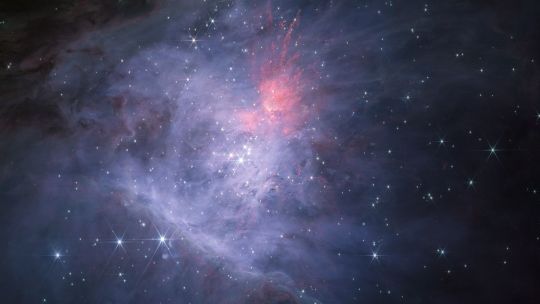
Physics-breaking 'rogue' objects spotted by James Webb telescope are emitting radio signals that scientists can't explain | Live Science
A bizarre object discovered by the James Webb Space Telescope may be a pair of 'rogue' planets ― but a new study finds they are emitting radio signals rarely seen from other worlds
In 2023, the James Webb Space Telescope (JWST) helped identify hundreds of free-floating "rogue" planets that don't orbit a parent star. Now, astronomers have found that a pair of these planets may be producing enigmatic, hard-to-interpret radio signals.
The rogue planets spotted by JWST lie in the Orion Nebula, a long-time observational hotspot for astronomers. In total, they number over 500. This discovery bonanza was possible thanks to JWST's ability to pick up infrared radiation emitted by these relatively young planets.
Bizarrely, though, about 80 of these planets exist as pairs. Similar in mass to Jupiter, the planets orbit each other at distances ranging from 25 to 400 times the distance between Earth and the sun. These tangoing duos, called Jupiter-mass binary objects (JuMBOs), pose a huge mystery for astronomers, because the existence of these worlds challenges current theories of planet formation. Some scientists think these objects may not even be planets but rather previously unknown entities that are larger than planets but smaller than brown dwarfs, which are sometimes called "failed stars" because they blur the line between planets and stars. ...
7 notes
·
View notes
Text
The free-floating entities, which have been named Jupiter-mass binary objects, or Jumbos, appear in spectacular images taken by the James Webb space telescope. The objects are too small to be stars, but also defy the conventional definition of a planet because they are not in orbit around a parent star.
The discovery also appears to confound existing theories of star and planetary formation, which suggest it should not be possible to form Jupiter-sized objects through the process that gives rise to stars inside the clouds of dust and gas found in a nebula.
Prof Mark McCaughrean, a senior adviser for science and exploration at the European Space Agency, said the observations were inspired after data from ground-based telescopes hinted at the existence of the mysterious class of object.
“We were looking for these very small objects and we find them. We find them down as small as one Jupiter mass, even half a Jupiter mass, floating freely, not attached to a star,” he said. “Physics says you can’t even make objects that small. We wanted to see, can we break physics? And I think we have, which is good.”
I love moments like this. Once again space exploration is proving that what we thought was right is actually wrong. It's fascinating seeing it in real time. One of the good things about being alive right now.
11 notes
·
View notes
Text
James Webb Telescope Weekly Round up - JuMBOs Unveiled: A Cosmic Mystery in the Orion Nebula Captured by the James Webb Space Telescope. Read more about this astonishing discovery here

The James Webb Space Telescope has once again left us in awe with its groundbreaking discoveries! 🚀🔭
In the Orion Nebula, located 1,300 light-years from Earth, astronomers have unveiled a cosmic enigma – Jupiter Mass Binary Objects (JuMBOs)! 🪐🪐 These pairs of planet-like entities challenge the very foundations of our understanding of the universe.
🌠 How did they form? Why are they there? These are questions that have left scientists scratching their heads. This discovery hints at something fundamentally new about star and planet formation.
As Webb continues to probe deeper into the mysteries of the cosmos, we are reminded of the boundless wonders our universe holds. 🌠🤯
Read the full article here and embark on a cosmic journey of discovery.
14 notes
·
View notes
Text

Hubble finds that ageing brown dwarfs grow lonely
It takes two to tango, but in the case of brown dwarfs that were once paired as binary systems, that relationship doesn’t last for very long, according to a recent survey using the NASA/ESA Hubble Space Telescope.
Brown dwarfs are interstellar objects larger than Jupiter but smaller than the lowest-mass stars. Like stars, they collapse out of a cloud of gas and dust but do not have enough mass to sustain the fusion of hydrogen like a normal star.
Like stars, brown dwarfs can be born in pairs and orbit about each other. A Hubble Space Telescope survey has found that the older a brown dwarf is, the less likely it is to have a companion dwarf. This implies that a binary pair of dwarfs is so weakly linked by gravity that they drift apart over a few hundred million years as a result of the pull of bypassing stars. Call them the lonely hearts of the cosmos.
Hubble can detect binaries as close to each other as 480 million kilometres — the approximate separation between our Sun and the asteroid belt. But the astronomers who carried out the survey didn’t find any binary pairs in a sample of brown dwarfs in the solar neighbourhood. “Our survey confirms that widely separated companions are extremely rare among the lowest-mass and coldest isolated brown dwarfs, even though binary brown dwarfs are observed at younger ages. This suggests that such systems do not survive over time,” said lead author Clémence Fontanive of the Trottier Institute for Research on Exoplanets, Université de Montréal, Canada.
In a similar survey Fontanive conducted a couple of years ago, Hubble looked at extremely young brown dwarfs and some had binary companions, confirming that star-forming mechanisms do produce binary pairs among low-mass brown dwarfs. The lack of binary companions for older brown dwarfs suggests that some may have started out as binaries, but parted ways over time.
The new Hubble findings further support the theory that brown dwarfs are born the same way as stars, through the gravitational collapse of a cloud of molecular hydrogen. The difference is that they do not have enough mass to sustain nuclear fusion of hydrogen for generating energy, whereas stars do. More than half of the stars in our galaxy have a companion star that resulted from these formation processes, with more massive stars more commonly found in binary systems. “The motivation for the study was really to see how low in mass the trends seen among multiple star systems hold up,” said Fontanive.
“Our Hubble survey offers direct evidence that these binaries that we observe when they’re young are unlikely to survive to old ages, they’re likely going to get disrupted. When they’re young, they’re part of a molecular cloud, and then as they age the cloud disperses. As that happens, things start moving around and stars pass by each other. Because brown dwarfs are so light, the gravitational hold tying wide binary pairs is very weak, and bypassing stars can easily tear these binaries apart,” said Fontanive.
The team selected a sample of brown dwarfs previously identified by NASA’s Wide-Field Infrared Survey Explorer. It sampled some of the coldest and lowest-mass old brown dwarfs in the solar neighbourhood. These old brown dwarfs are so cool (a few hundred degrees warmer than Jupiter in most cases) that their atmospheres contain water vapour that condensed out.
To find the coolest companions, the team used two different near-infrared filters, one in which cold brown dwarfs are bright, and another covering specific wavelengths where they appear very faint as a result of water absorption in their atmospheres.
“Most stars have friends – whether that is a binary companion or exoplanets,” added team member Beth Biller of the University of Edinburgh in the United Kingdom. “This survey really demonstrates that the same is not true for brown dwarfs. After a brief period early in their lifespans, most brown dwarfs remain single for the rest of their very long existence.”
“This is the best observational evidence to date that brown dwarf pairs drift apart over time,” said Fontanive. “We could not have done this kind of survey and confirmed earlier models without Hubble’s sharp vision and sensitivity.”
IMAGE....This is an artist’s representation of a brown dwarf. This class of object is too large to be a planet (and did not form in the same way), but is too small to be a star because it cannot sustain nuclear fusion, since it is less massive than even the smallest stars. A brown dwarf is likely to be marked by wind-driven horizontal bands of thick clouds that may alternate with relatively cloud-free bands, giving the object a striped appearance. Whirling storm systems as big as terrestrial continents, or even small planets, might exist.The name ‘brown dwarf’ is actually a misnomer because the object would typically appear red to the naked eye. It is brightest in infrared light. Many brown dwarfs have binary companions. But as they age, the binary system drifts apart and each dwarf goes its separate way, according to a recent Hubble Space Telescope study.The background stars in this illustration are a science visualisation assembled from the Gaia spacecraft star catalogue. The synthesised stars are accurate in terms of position, brightness, and colour. Because this is not an image of the Milky Way, missing are glowing nebulae and dark dust clouds.[Image description: This artist’s representation shows a brown dwarf, an object more massive than a planet but smaller than a star. The dwarf is a cherry-red sphere. It has horizontal stripes of various shades of red that are cloud bands. In the dark background there are myriad stars that are inside our Milky Way galaxy.] Credit: NASA, ESA, J. Olmsted (STScI)
4 notes
·
View notes
Text
Science fact of the day- Pluto!
I was initially going to talk about Pluto's classification as a dwarf planet, but honestly I think thats worth leaving for another sfotd. Pluto has plenty of interesting elements by itself, and I think dwarf planets are just as worthy of love as their larger counterparts.
To start off, Pluto's surface is very unique and has several distinct features. One of the coolest Tombaugh Regio, a large bright area which is roughly heart shaped. which is just kinda cute tbh. One lobe of the Heart is called Sputnik Planitia, which is named after Sputnik 1, which is one of my favorite things ever. It has a large number of other features, including red regions probably caused by organic compounds called tholins as well as various dark and bright spots. Pluto also has another unique surface feature called Penitentes, which are sorta like spikes of snow- as far as we know, this only happens on Earth and Pluto, although theyre might also exist on Europa. Also, Pluto seems to have a really young surface. It has almost no craters at all, and in addition to other facts, it seems like it had a resurfacing event within only the last few hundred thousand years alone. I know that feels like a long time, but on the geological, let alone planetary time scale, that's nothing. hell, humans have been around longer than that, probably. which is honestly a bit wild. Pluto also has an atmosphere, although with a pressure of only one pascal (1/100,000 Earth's typical pressure) it's not too much to look at. It was initially expected that when pluto has farthest from the sun (aphelion), its atmosphere would freeze only to sublimate again when it got closer to the sun, but it doesn't seem like this actually happens.
Pluto also has 5 moons. The biggest of these is Charon, named after the ferryman of the dead from mythology. That said, it's entirely possible that Charon is actually also a dwarf planet. It's about half the size and one-tenth the mass of pluto, but thats still possibly large enough for it to meet the qualifications for a dwarf planet. if this is the case, then Charon and Pluto would form a binary dwarf planet system, and when looking at the two, this is generally a more useful to way to think of them. One insteresting consequence of Charon's size is that it doesn't actually orbit Pluto- instead, it orbits around the common center of mass of the two objects, called the barycenter. Because it's so massive, the barycenter lays signifignatly beyond the surface of pluto, and thus pluto also seems to orbit the barycenter, although at a much closer distance than Pluto does. Technically speaking, any two orbits which orbit one another orbit a common barycenter, however, unless their even close to similar in mass, the barycenter will lay very near the center of the larger body. With the Earth and Moon, the barycenter sits only about 1500 km below the surface- about one quarter of the way down to the center of the planet. outside of pluto and charon, the only other notable object with a barycenter outside itself is actually the sun, specifically in its orbit around Jupiter. despite jupiter only being .1% of the mass of the sun, because its so far away, their common center of mass is just a bit above the sun's surface. While a barycenter is mainly important for two bodies orbiting each other, other objects can also orbit around that barycenter. this called a circumbinary orbit, and its the state in which plutos other four moons exist. circumbinary orbits need to be further out and moving relatively slowly in order to be stable, and are generally pretty small objects, so pluto's four other moons are really, really tiny, and generally not as interesting, unfortunately.
3 notes
·
View notes
Text
Planet Jam 2 is released!
https://forum.kerbalspaceprogram.com/index.php?/topic/211156-v10-central-fire-planet-jam-2-armstrongs-limit-homeworld-in-the-ilio-pyri-planetary-system/
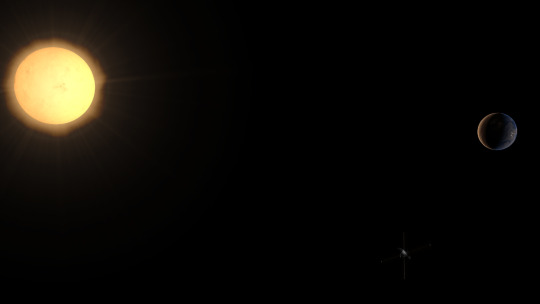

Welcome to Armstrong
Radius: 950,000m (1.5 Kerbin Radii)
Surface Gravity: 1.75G
Atmospheric Pressure: 0.068atm
Orbital parent: Pyri, a red dwarf star.
Orbital and rotation period: 6 hours.
System Layout:
The Ilio System is a large and complex system. Counting stars, planets, moons, and asteroids, there's a total of 101 objects.
The Ilio System is divided into an Inner System, with four gas giant planets, the Pyri System with its planets and trojans, and an Outer System, with three gas giants on two orbits with associated coorbitals, and a distant dwarf planet.

The Inner Pyri System. This is your home in space. Note the prevalence of asteroids in the Arriprit Belt. What may look like clutter in the map view is actually vital early-space-program scientific targets, and refuelling infrastructure that can be used to climb out of Pyri's steep gravity well. Zhandar is a mid-size gas giant that can be used to provide powerful gravity assists, these trans-Zhandar trajectories are some of the most important in any deep space interplanetary mission.
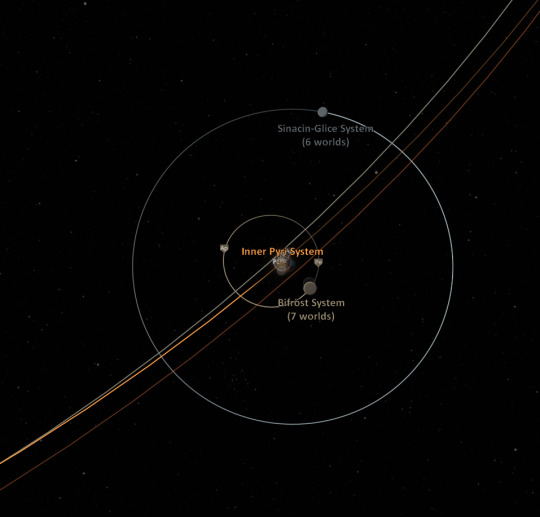
Zooming out to see the Outer Pyri System. Bifröst is a superjupiter. Its magnetodisk is visible as a dim rainbow ring in the night sky. Its enormous mass also makes it extremely useful for providing gravity assists. If you can get out to Zhandar, you can get out to Bifrost. And if you can get out to Bifrost you can go anywhere. Beyond Bifrost, but much less massive, is Sinacin-Glice.
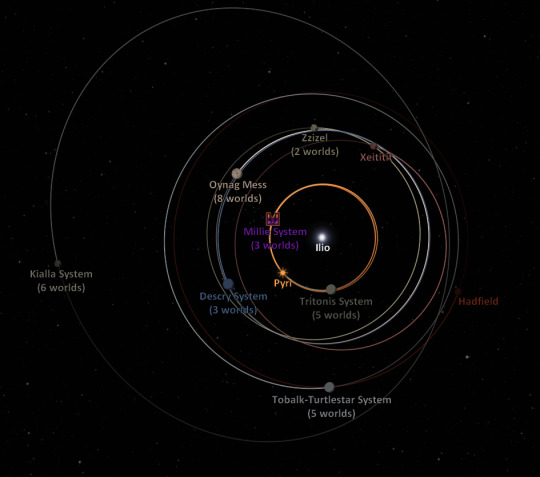
Zooming all the way out, we can see the Outer Ilio System. Pyri is so small compared to its double-sun parent that it can support trojans, leading and trailing 60 degrees away from Pyri but in the same orbit. Beyond the destabilizing influence of Pyri are Oynag and its trojans, and the Tobalk-Turtlestar binary. There's also four dwarf planets in this part of the system.
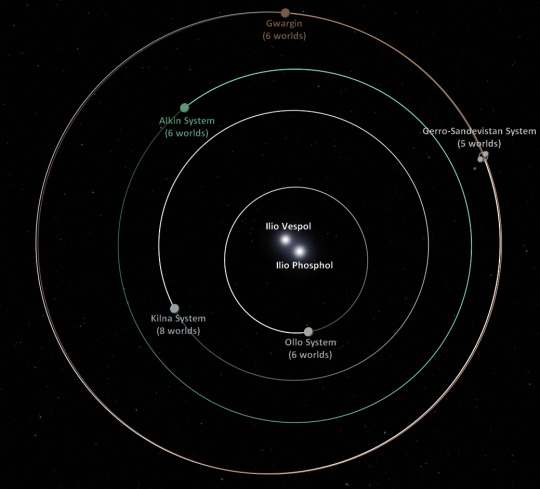
Zooming all the way in, we can see the Inner Ilio System. These four giant planet systems are well placed due to their increased instellation from the Sun--Alkin and Kilna may even support life. Alkin's mass is almost the same as that of Jupiter.
#if you like this you should reblog; likes do nothing.#KSP#Kerbal Space Program#Planet Modding#Modding#Gamedev#Planets#Space#Astronomy#Gas Giants#Stars#Asteroids#Planet Jam 2#PJ2
28 notes
·
View notes
Quote
The latest spectacle, observed by the James Webb Space Telescope, is an agglomeration of nearly 150 free-floating objects amid the Orion Nebula, not far in mass from Jupiter. Dozens of these worlds are even orbiting each other. The scientists who discovered them have called them Jupiter Mass Binary Objects, or JuMBOs, and the reason for their appearance is a complete mystery.
“There’s something wrong with either our understanding of planet formation, star formation — or both,” said Samuel Pearson, a scientist at the European Space Agency who worked on the observations that were shared on Monday, which have not yet been peer reviewed. “They shouldn’t exist.”
James Webb Telescope Discovers Orion Nebula Enigmas That ‘Shouldn’t Exist’ - The New York Times
2 notes
·
View notes
Text
The Orion Nebula Is Full of Impossible Enigmas That Come in Pairs (NYTimes)
In new, high-resolution imagery of the star-forming region, scientists spotted worlds that defied explanation, naming them Jupiter Mass Binary Objects.
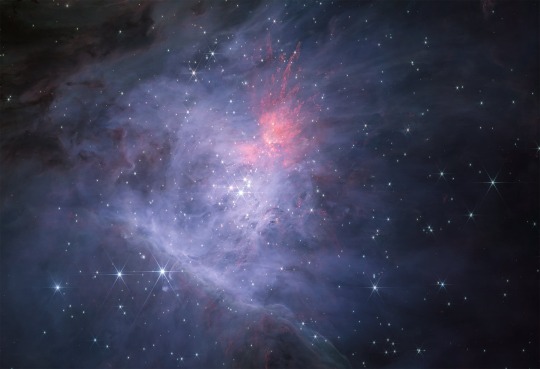
An infrared composite image of the inner Orion Nebula and Trapezium Cluster captured by the James Webb Space Telescope.NASA, ESA, CSA/Mark McCaughrean & Sam Pearson
We have discovered a lot in this universe. Planets that orbit stars at right angles. Forbidden worlds that have cheated death. Space explosions that defy explanation.
Yet the cosmos continues to surprise us.
The latest spectacle, observed by the James Webb Space Telescope, is an agglomeration of nearly 150 free-floating objects amid the Orion Nebula, not far in mass from Jupiter. Dozens of these worlds are even orbiting each other. The scientists who discovered them have called them Jupiter Mass Binary Objects, or JuMBOs, and the reason for their appearance is a complete mystery.

The Orion Nebula is a region of star formation 1,350 light-years from Earth, located in the belt of the northern hemisphere constellation of Orion. It has long been studied by astronomers, but the scientists involved in the new Webb telescope study of the area, also released on Monday, say the new images are “by far” the best views yet.

Stars in our universe form when giant clouds of dust and gas gradually coalesce under gravity. Eventually, regions of a cloud become so dense that they squeeze atoms of hydrogen together and kick-start nuclear fusion, forming the core of a star. In less dense areas, a more diminutive version of fusion — deuterium fusion — can occur in smaller objects. These are called brown dwarfs, or sometimes “failed stars.”
JuMBOs appear to be a smaller class of gaseous object. While brown dwarfs can grow to about 13 times the mass of Jupiter, the new objects can get as small as about half the planet’s mass, with temperatures of more than 1,000 degrees Fahrenheit. They are separated by about 200 times the distance between the Earth and the Sun, orbiting each other on paths that take more than 20,000 years to complete.
Were they alone in space, they might be easier to explain. But their appearance in pairs, 42 of which are seen by the Webb telescope in the Orion Nebula, is baffling. According to existing scientific models, it should not be possible to form single objects so small directly from clouds of dust and gas, let alone in pairs, Dr. Pearson said. Even if they were ejected planets — violently kicked from young stars because of gravitational forces — it is similarly unclear why there would be so many couplets.
“It’s like kicking a cup of tea across a room and having all the tea land in the teacup,” Dr. Pearson said. “And then doing that 42 times.”
The discovery is “completely unexpected,” said Matthew Bate, a professor of theoretical astrophysics at the University of Exeter in England. Many stars, perhaps even all stars, including our sun, are born as pairs. But as binary objects decrease in mass, they become less common, as their weaker gravitational attraction makes them more easily torn apart. Yet the existence of JuMBOs “implies we may be missing something about how these very low mass objects form,” Dr. Bate said.
Dr. Pearson hopes to get to the bottom of the problem by using the Webb telescope to pick apart the light from the objects, revealing what their gaseous atmospheres are made of and perhaps how they formed. Currently, he said, he can only deduce evidence of methane and water on them.
Looking for JuMBOs in other star-forming regions could help, too.
“Orion is really massive and really dense,” Dr. Pearson said. “Do we find the same thing happens in a sparse region? That might give us a clue of what formation mechanism might be happening.”
Until that mystery is solved, humans can marvel at the Webb telescope’s valuable new vantage of the Orion Nebula.
“When I was a young student and we were just starting to use electronic sensors on telescopes, we often waited with great anticipation for each ‘YAMOO’ — Yet Another Map Of Orion — because of the remarkable and surprising details each new detector revealed,” said Heidi Hammel, a NASA interdisciplinary scientist for the telescope and vice president for science at the Association of Universities for Research in Astronomy.
The Webb telescope, she said, just “delivered spectacularly on its YAMOO.”
-This universe is more bizarre than we can imagine.
1 note
·
View note